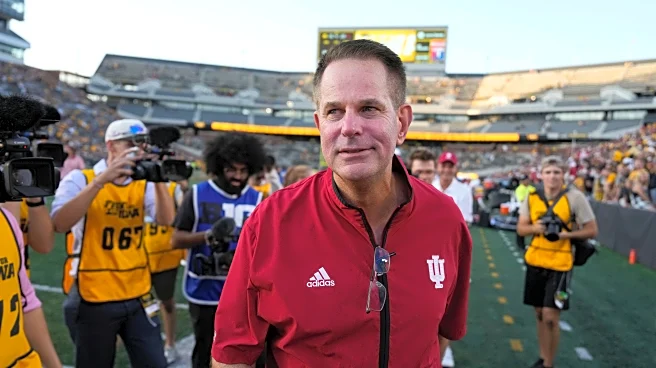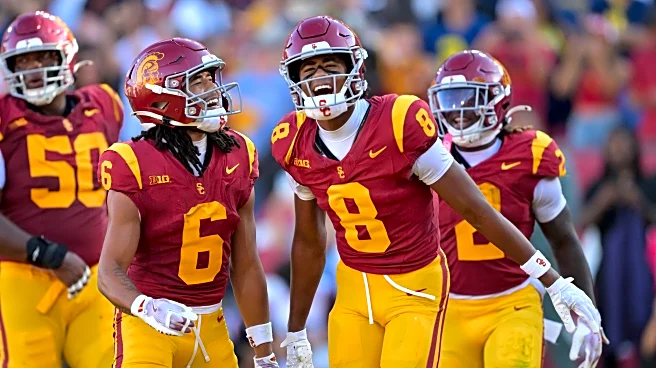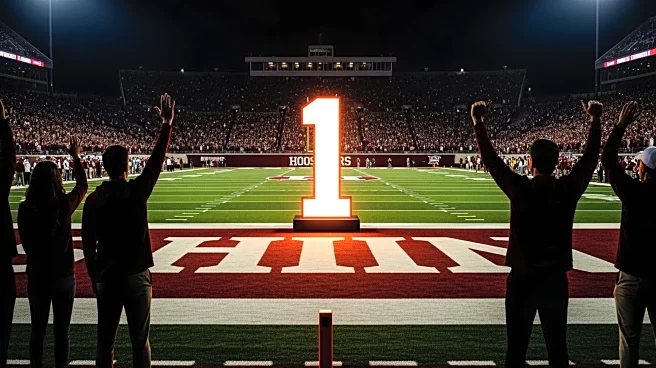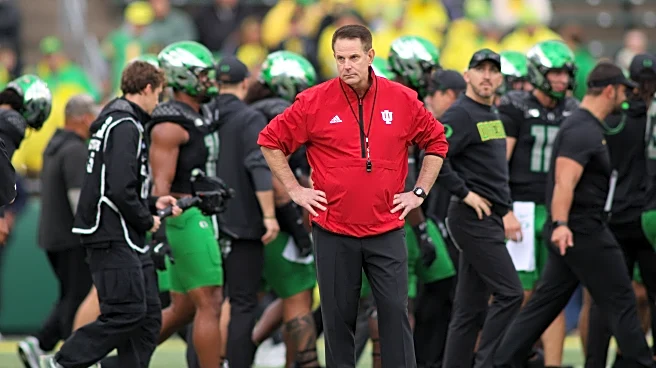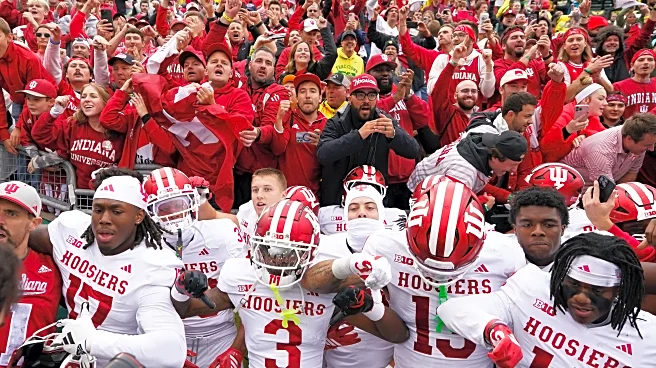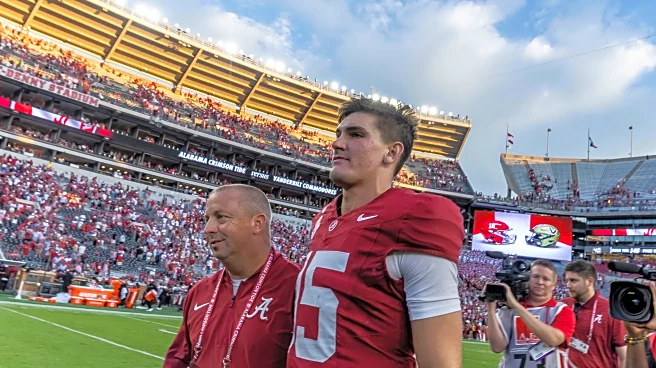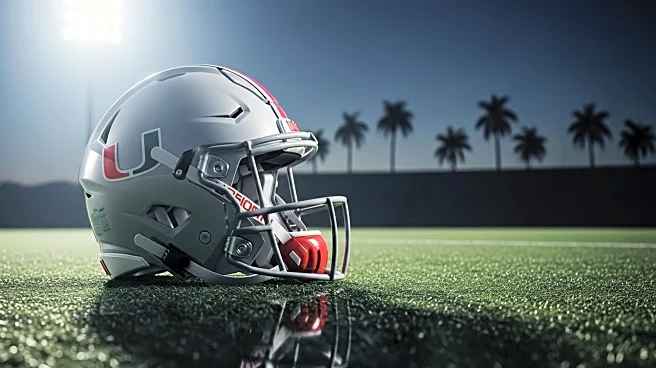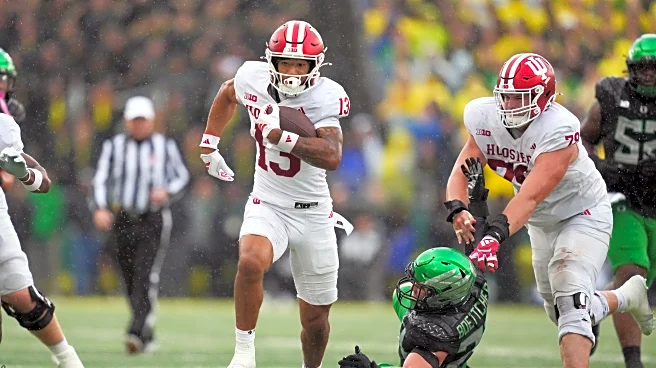What's Happening?
ESPN analyst Kirk Herbstreit has ranked Indiana as the No. 1 college football team following their 30-20 victory over Oregon. This ranking places Indiana ahead of defending national champion Ohio State.
Herbstreit praised Indiana's performance, particularly their resilience in overcoming a tied game in the fourth quarter. Indiana's quarterback, Fernando Mendoza, led a crucial drive resulting in a touchdown, and the team secured the win with key interceptions. Despite being ranked third in the Associated Press poll, Indiana's rise from 20th at the start of the season to their current position reflects their strong performance under head coach Curt Cignetti.
Why It's Important?
Indiana's ascent to the top of college football rankings signifies a shift in the competitive landscape, challenging traditional powerhouses like Ohio State. This development is significant for the Big Ten Conference, as it highlights the emergence of new contenders and the dynamic nature of college football rankings. Indiana's success could influence recruitment strategies and increase the program's visibility, potentially attracting more talent and resources. The ranking also impacts fan engagement and media coverage, contributing to the broader narrative of college football's evolving hierarchy.
What's Next?
Indiana will aim to maintain their momentum as they continue their season, with the potential to finish undefeated and secure a spot in the Big Ten Championship Game. Their upcoming schedule includes teams with varying records, presenting opportunities to solidify their position. The team's performance will be closely monitored by analysts and fans, with implications for postseason opportunities and national recognition. Indiana's ability to sustain their success will be crucial in determining their long-term impact on college football rankings.
Beyond the Headlines
Indiana's rise in college football rankings highlights the importance of strategic coaching and player development in achieving competitive success. The team's ability to perform under pressure and adapt to challenging situations reflects the broader trends in sports management and athletic training. This development also underscores the role of media influence in shaping public perception and the significance of analyst rankings in driving narratives within college sports.


